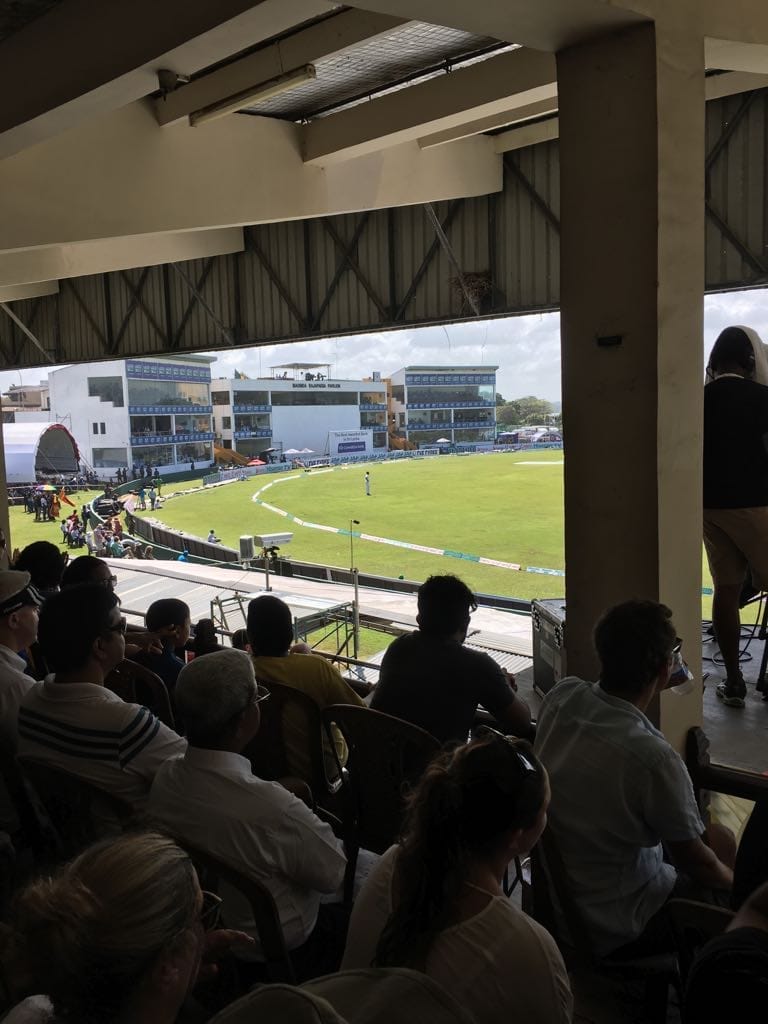The first between Sri Lanka and South Africa, which starts on Wednesday at the Galle International Stadium will be the twenty third Test to have been played at that iconic ground. Of the twenty two played previously, Sri Lanka have won twelve and lost four.
The first Test played at Galle, in June 1998, provided what might almost be called a template, setting as it did a precedent that has been followed reasonably faithfully since.. New Zealand’s batsmen struggled against the home side’s spinners – Muttiah Muralitharan took three for 24 in their second innings – and Sri Lanka’s innings victory was boosted by a superb 167 by a 21 year old playing in his fourth Test match. It was Mahela Jayawardene’s maiden Test century and the first of seven he has scored at Galle (he was run out for 99 against the West Indies in November 2001).. The only thing that has changed was that this was the second Test of the series ( New Zealand had won the first but Sri Lanka took the decider). Since then it has been common for Galle to host the opening Test and set the stage for the series.
Sri Lanka’s Galle victories have tended to come in clumps. Between July 2000 and January 2002 they won five in a row and were denied a sixth in December 2003 in a nail biting draw by England’s last wicket pair of Ashley Giles and Matthew Hoggard.. Muralitharan had taken 50 wickets in those five victories and he took a further eleven against England. They won three in a row in 2012, Rangana Herath doing most of the damage.
For Sri Lanka to lose at Galle , something pretty special has to happen. In June 2000 when Pakistan won by an innings and 163 runs, four of their batsmen made hundreds and Waqar Younis took seven wickets in the match. In 2008 India won by 110 runs. In a game where all the other batsmen struggled – Harbhajan Singh took ten wickets for India – Virender Sehwag carried his bat for an astonishing double century in a total of 329. The Test was also memorable for the first use – on an experimental basis – of the DRS system.
In August 2011 Sri Lanka were effectively hoist by their own petard. The ball turned square almost from the start but it was Australia who won the toss and made the most of the conditions. Debutant Nathan Lyon took a five- for in Sri Lanka’s first innings ( as did warhorse Ryan Harris in the second). Among the batsmen only Jayawardene (105 in the second innings) and Mike Hussey demonstrated the technical nous to cope. Australia won by 125 runs
But perhaps the most remarkable Sri Lankan defeat – and perhaps the most remarkable Galle Test – – came against Australia in March 2004. Australia suffered a first innings deficit of 161 , seemingly a hopeless position – but in their second innings made 512 for 8., with Darren Lehmann, Matthew Hayden and Damien Martyn scoring hundreds. They bowled the hosts out for 154, Shane Warne taking five for 43: Australia won by 177 runs. Warne, who took ten wickets in the match, ( it was his first after a twelve month drugs ban) just pipped Muralitharan , who himself took eleven, to 500 Test wickets.
Later , of course , Muralitharan was able to celebrate the unprecedented attainment of 800Test wickets , in a famous victory over India in July 2010. That must surely go down as the greatest single event in Galle’s cricketing history.
The six draws have been a mixed bag. The weather has sometimes been a factor. That was the case against the West Indies in November 2010 when Chris Gayle scored his second Test triple century. The last Test staged at Galle , against Bangladesh in March 2013 , was unusual in providing the ultimate flat track: eight centuries in all, including two by Kumar Sangakkara. More often than not the wicket has something to offer , usually but not invariably to the spinners. In August 2001 when the hosts beat India by ten wickets they fielded four fast bowlers for the first time in a Test: Dilhara Fernando took five wickets in India ‘s first innings,
Three leading members of Sri Lanka’s current side made their Test debuts in Galle – Herath against Australia in 1999, Sangakkara against South Africa in 2000 and captain Angelo Mathews against Pakistan in 2009. None of Hashim Amla’s South Aficans have played there at all. South Africa have played there twice. They lost by an innings in 2000 when Muralitharan took thirteen wickets in the match and became the sixth bowler to dismiss each opposition batsman in the same Test. There was a high scoring draw in August 2004 when Jayawardene made 237.
This time around South Africa’ s top order will have a slightly experimental look, with no Graeme Smith and no Jacques Kallis. But with the redoubtable Amla and the peerless A B de Villiers in sparkling form during the one day series , Sri Lanka’s bowlers may have some hard graft ahead of them.
Bill Ricquier 14/7/2014
The article was featured in The Island News: http://island.lk/index.php?page_cat=article-details&page=article-details&code_title=106770




